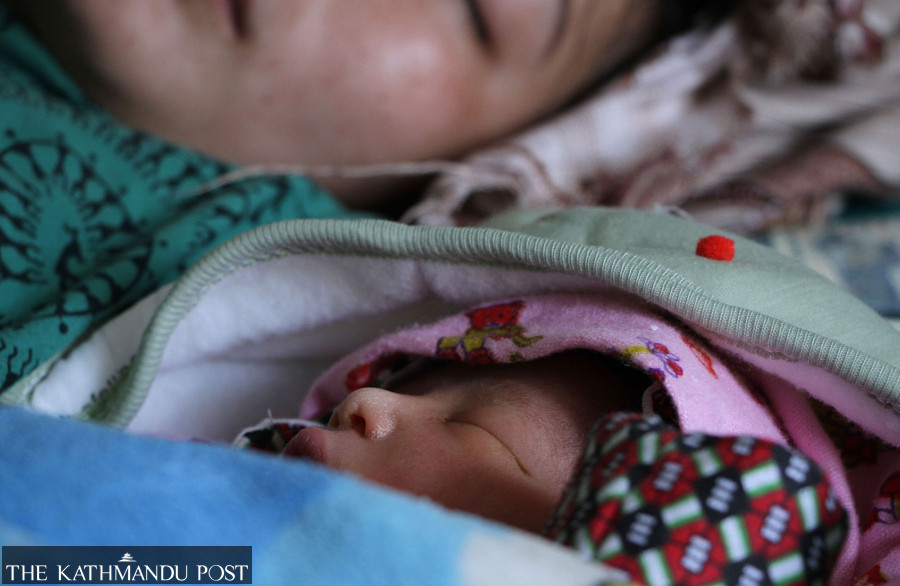
In Kathmandu district, 28 percent women still opt for unsafe deliveries at home, officials say. Post File Photo
Over 40 percent of pregnant women in Bagmati Province, which is also home to the federal Capital, opted for home delivery in the last fiscal year, according to the Health Directorate of the Province.
According to the directorate data, only 59.17 percent of the total registered births took place in health facilities. Of the total institutional births, only 57 percent were aided by trained health workers in Bagmati Province.
“A total of 40.83 percent of women were found to be giving birth at home in the 13 districts of the province,” said Sabitri Poudel, director of the Health Directorate of Bagmati Province.
According to data provided by the Heath Directorate of Bagmati Province, in the fiscal year 2019/20, only 58 percent of deliveries took place in health care centres while in the last fiscal year 2020/21, the province saw 59.17 percent of institutional births.
As per the data of pregnancies in health care centres collected from both government and private hospitals and local health care centres, a total of 1,32,633 women were estimated to be pregnant in the previous fiscal year, and of them, 78,480 pregnant women opted for institutional births.
The country has already missed its own 2020 target to reduce maternal mortality to 125 per 100,000 births. It had reduced the maternal mortality rate from 539 per 100,000 in 1996 to 239 per 100,000 in 2016—for which the country even received the Millennium Development Goal award.
The health target under the UN’s Sustainable Development Goals is to reduce the maternal mortality rate to 75 for every 100,000 births by 2030.
According to the Health Directorate in Hetauda, of the total 13 districts, the majority of unsafe deliveries were taking place in Rasuwa, Sindhupalchok and Ramechhap districts.
Only 26 percent of women opt for institutional births in Rasuwa, as per the data of the Health Directorate.
According to Hemnath Khatiwada, Informal Sector Service Centre (INSEC) representative of Rasuwa, most families rely on traditional healers to see women through pregnancy and delivery in the district.
“Illiteracy and a lack of easy access to health care centres are also the reasons why families in Rasuwa do not opt for institutional births,” Khatiwada said.
According to the data of the Health Directorate, 72 percent of women in Ramechhap, 69 percent in Sindhupalchok, and 58 percent in Sindhuli and Dhading districts do not visit health care centres for either pre or post-natal checkups.
Out of the 13 districts, only Chitwan has a 100 percent record of institutional births, according to the District Health Office Chitwan chief Dipak Tiwari.
After Chitwan, Lalitpur has the highest number of pregnant women visiting health care centres for birthing.
“Over 90 percent of women in Lalitpur give birth in health care centres,” said Indramani Bhandari, an official at the directorate.
In Kathmandu district, 28 percent of women opt for unsafe deliveries at home. Only 72 percent go to birthing centres to give birth, as per government data.
Fifty-three percent of women give unsafe births in Nuwakot followed by 51 percent in Makawanpur and Dolakha, 49 percent in Kavre and 38 in Bhaktapur, data show.
Bagmati Province has 13 hospitals, 42 primary health care centres, 642 health care centres, 103 urban health centres, 2,482 vaccination centres, 1,983 clinics and 9,381 women health care workers.













